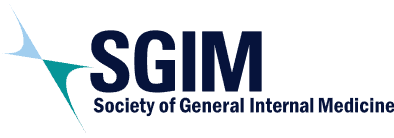We report on the Medical Education Update presented during the virtual national meeting SGIM20 On-Demand. Six members of the SGIM Education Committee reviewed all manuscript titles from 14 major medical education journals published in 2019. Fifty-four (54) articles were assessed based on the following criteria: relevance to a GIM audience, importance of the study question, quality of methodology, and generalizability. Two reviewers independently assessed each article with 10 identified as finalists; group consensus identified the six papers chosen for presentation. Manuscripts spanning the scope of undergraduate, graduate, and continuing medical education were included. We offer a brief synopsis of each of the presented papers below.
Medical Student Access to EHR1
Electronic health records (EHR) are ubiquitous in today’s healthcare environment and learning clinical documentation skills during medical school is essential. This study used a web survey of medical students to gather descriptive data to understand their use of the EHR.
Key Messages:
Students were randomly assigned surveys upon completion of USMLE Step 2 Clinical Knowledge (CK) between July 2011 and August 2016—16,602 responses were collected and analyzed. The authors created nine dichotomous variables that ranged from type of EHR access to specific activities performed by students. The authors compared responses between inpatient and outpatient settings and different levels of training (core IM clerkship v. sub-internship). Most students interacted with the EHR with a trend towards more interaction over time. Generally, students had more than “read only” access, but decreased access occurred more frequently in the outpatient setting. During this study period overall access improved, order entry dropped during core clerkships and increased during the sub-internship.
Strengths/Limitations:
The survey collected descriptive data and occurred prior to new Centers for Medicaid and Medicare Services (CMS) guidelines for medical student documentation. While there is hope that new guidelines will provide medical students more robust access, inconsistent uptake of these practices continues nationally. Cultivating medical students’ skills in EHR use is important, determining CMS guideline change impact remains to be seen.
Resident Milestone Ratings and Training Progression2
Competency-based medical education rests on the assumption that learners must achieve a defined standard of performance before promotion. This mixed methods analysis examined milestone progression of a single cohort of internal medicine residents utilizing end-of-rotation assessments; 828/1869 (44%) assessments included narrative comments. Quantitative data was broken down by competency and PGY year, with a mixed-effects regression utilized to examine longitudinal trends across training years; qualitative data was coded into themes.
Key Messages:
The quantitative analysis indicated that resident ratings increased slightly but significantly in all but one ACGME competency—interpersonal and communication skills—over training. Ratings moderately correlated with narrative comments. The qualitative analysis identified work ethic as most common theme among all learners. Nearly all comments were praising, and three quarters of them classified as relevant. Results suggested that themes identified by narrative comments changed as residents progressed, reflecting changes in expected roles and competencies of residents.
Strengths/Limitations:
This is the first longitudinal study examining milestone progression within a single cohort of residents over the course of training. Limitations include: single institution study, only half of evaluations included narrative comments, and the absolute magnitude of variation was small in the final analysis.
Flipped Classroom v. Traditional Didactic Teaching3
The flipped classroom is an asynchronous learning experience where learners self-study basic concepts, preserving face-to-face time with instructors to strengthen concepts through active learning. This randomized study compared knowledge acquisition and retention of the flipped classroom method with that of standard didactic teaching utilizing a knowledge test distributed pre-intervention, post-intervention, and delayed post-intervention.
Key Messages:
The flipped classroom group performed significantly better than the standard group and this persisted at the delayed post-intervention assessment. Interns spent more time preparing for the flipped classroom, averaging 12 additional minutes, but felt the flipped classroom would not be feasible on inpatient rotations.
Strengths/Limitations:
A flipped classroom in a controlled residency setting improved knowledge without sacrificing satisfaction. Generalizability is the major limitation and results do not delineate whether the impact of the flipped classroom derived from the pre-work or the active learning experience.
Novel PrEP Curriculum4
The authors describe a curriculum teaching residents inclusive sexual history taking and HIV prevention care in a dedicated pre-exposure prophylaxis (PrEP) clinic at a single institution. They present mixed-methods evaluation data measuring participants’ comfort and experience with sexual history taking, safer sex counseling and discussion of PrEP, specifically addressing LGBTQ patients.
Key Messages:
Of 34, 19 participants completed paired pre/post self-assessment surveys showing statistically significant increase in confidence in HIV prevention topic areas with greatest increases seen with initiating discussions about PrEP and sexual history taking with LGBTQ patients. In addition, 58% reported no prior training in providing PrEP. Semi-structured interviews highlighted increased confidence; this new awareness and comfort led to improved attitudes toward working with LGBTQ populations.
Strengths/Limitations:
This study addresses important and underrepresented curricular areas in residency training. Provision of PrEP is an important skill for primary care physicians and all physicians must be able to work sensitively with LGBTQ patients. Generalizability is questionable and it is unclear if self-reported comfort translates to improved observable skills or patient care.
Work Hour Restrictions and Patient Outcomes5
Since 2003, the Accreditation Counsel for Graduate Medical Education (ACGME) has proposed work-hour reforms though concern exists they will result in less robust clinical experience. This study examined whether physicians trained after 2003 ACGME work hour reforms had worse patient outcomes or higher costs of care in their first year of independent practice compared with physicians who completed residency before the reforms.
Key Message:
This retrospective observational study compared the 30-day mortality, 30-day readmission rate, and inpatient Medicare Part B spending between patients treated by first-year internists fully exposed to work hour reforms and those treated by first-year internists with partial/no exposure to the reforms. The authors created a difference-in-difference model, which compared the post-2006 period with the pre-2003 period. The authors examined a random sample (n=485,685) of hospitalized Medicare beneficiaries > 65 years treated by general internists. They found no significant differences between either group of first-year internists in 30-day mortality, 30-day readmissions, and inpatient Medicare Part B spending.
Strengths/Limitations:
The main strength is the access to Medicare data. One limitation was the use of Medicare Part B spending as a proxy for overall inpatient resource use. Another limitation was that this analysis focused solely on the impact of the 2003 ACGME reform, and the difference-in-difference approach assumed that reductions in work hours occurred sharply in the first year of the reform.
Primary Care Training Programs6
The authors examined how primary care internal medicine (PC IM) programs and tracks define ambulatory training and whether graduates of PC IM programs pursue careers in PC. They conducted a cross-sectional survey of primary care program directors between September 2012 and April 2013. Programs were identified by the NRMP and FREIDA databases and via website review. Further, 64% of program directors at 70 programs completed the survey.
Key Messages:
Most were affiliated with a categorical training program (98%), university affiliated (78%), and 38% reported HRSA funding. PC residents average 22.8 weeks/year training in the ambulatory setting. Most report specific curricula, most commonly: patient-physician communication, cultural competency, social determinants of health, and quality improvement. Regarding graduates: >50% pursued careers in PC or GIM, 10% pursued PC-oriented fellowships (i.e., geriatrics), 25% pursued traditional subspecialty fellowship, 27% pursued careers in academic medicine. There was no correlation between pursuing PC/GIM employment and program size/age, having inpatient duties during ambulatory, a dedicated PC curriculum, and number of clinic sessions/sites/patient encounters per session. More weeks in the ambulatory setting was inversely correlated to pursuing subspecialty training.
Strengths/Limitations:
The study provides important information about primary care training programs, curricular time for trainees, and career choice of graduates, though survey responses relied on recall. The authors did not inquire about hospital career choices.
References
- Wallach P, Foster L, Cuddy M, et al. Electronic health record use in internal medicine clerkships and sub-internships for medical students graduating from 2012 to 2016. JGIM. 2019;34(5):705-11.
- Tekian A, Park YS, Tilton S, et al. Competencies and feedback on internal medicine residents’ end-of-rotation assessments over time: Qualitative and quantitative analyses. Acad Med. 2019;94(12):1961-69.
- Graham KL, Cohen A, Reynolds EE, et al. Effect of a flipped classroom on knowledge acquisition and retention in an internal medicine residency program. JGME. 2019 Feb;11(1):92-97.
- Frasca K, Castillo-Mancilla J, McNulty MC, et al. A mixed methods evaluation of an inclusive sexual history taking and HIV prevention curriculum for trainees. JGIM. 2019;34(7):1279-88.
- Jena AB, Farid M, Blumenthal D, et al. Association of residency work hour reform with long term quality and costs of care of US physicians: Observational study. BMJ. 2019;366:l4134. doi: https://doi.org/10.1136/bmj.l4134 (Published 10 July 2019).
- Klein R, Alonso S, Anderson C, et al. Delivering on the promise: Exploring training characteristics and graduate career pursuits of primary care internal medicine residency programs and tracks. JGME. 2019; 11(4): 447-53.
Q & A with SGIM’s CEO and the Chair of the Learning Management System (LMS) Task Force
Why is SGIM adopting a Learning Management System (LMS)? SGIM Council acquired…
Publishing in SGIM Forum: Crediting Your Scholarly Work
Tiffany I. Leung, MD, MPH, FACP, FAMIA; and the SGIM Forum Associate Editors.
“Peer-reviewed or non-peer-reviewed? Indexed or non-indexed? Findable and citable? Tweetable? Open access?”…


